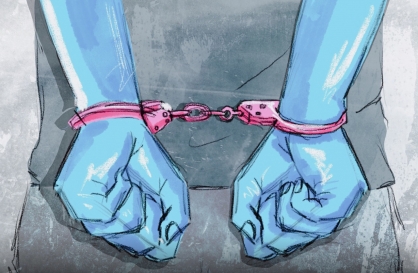Most Popular
Eye Plus
Just a few blocks off the busy streets near Gwanghwamun Plaza are clusters of Korean traditional houses -- or hanok -- that have stood the test of time in Seochon.
Seochon, which means west village in Korean, is a collection of districts west of Gyeongbokgung, including Cheongun-dong, Hyoja-dong, Ogin-dong and Sajik-dong. People of varying classes resided in this area in the Joseon period, while, in the modern era, its residents included writers and artists.
Today, it is also a popular tourist spot in Seoul, as Seochon retains traces of history and culture. The battered old gates, brick walls bring back nostalgia for the days before Seoul became a megalopolis of 10 million people
It is also worth taking the time to look for famous spots featured in Joseon paintings, such as the streets of Tongin-dong where King Sejong the Great strolled, and the valley of Suseong-dong made famous by the 18th century painter Jeong Seon.
Daeoh Bookstore, widely known as the oldest book store in Seoul, still hangs a sign that says “no politicians” and “no photos.” The Chinese restaurant Yeonghwaroo still looks the way it did in the 1960s and 1970s.
Gentrification of Seochon in recent years has driven out many longtime residents. But those who remain are fighting to keep the tradition of Seochon alive.
“There is history in culture. It is something that is created, accepted and developed,” said Lee Geun-bae who runs a cultural heritage center in Seochon. “We must create an environment where past and present coexist, where ‘the smell’ of people and history can be felt.”








By Hong Dam-young (lotus@heraldcorp.com)
Photos by Park Hyun-koo (phko@heraldcorp.com)
Seochon, which means west village in Korean, is a collection of districts west of Gyeongbokgung, including Cheongun-dong, Hyoja-dong, Ogin-dong and Sajik-dong. People of varying classes resided in this area in the Joseon period, while, in the modern era, its residents included writers and artists.
Today, it is also a popular tourist spot in Seoul, as Seochon retains traces of history and culture. The battered old gates, brick walls bring back nostalgia for the days before Seoul became a megalopolis of 10 million people
It is also worth taking the time to look for famous spots featured in Joseon paintings, such as the streets of Tongin-dong where King Sejong the Great strolled, and the valley of Suseong-dong made famous by the 18th century painter Jeong Seon.
Daeoh Bookstore, widely known as the oldest book store in Seoul, still hangs a sign that says “no politicians” and “no photos.” The Chinese restaurant Yeonghwaroo still looks the way it did in the 1960s and 1970s.
Gentrification of Seochon in recent years has driven out many longtime residents. But those who remain are fighting to keep the tradition of Seochon alive.
“There is history in culture. It is something that is created, accepted and developed,” said Lee Geun-bae who runs a cultural heritage center in Seochon. “We must create an environment where past and present coexist, where ‘the smell’ of people and history can be felt.”








By Hong Dam-young (lotus@heraldcorp.com)
Photos by Park Hyun-koo (phko@heraldcorp.com)





![[Weekender] How DDP emerged as an icon of Seoul](http://res.heraldm.com/phpwas/restmb_idxmake.php?idx=644&simg=/content/image/2024/04/25/20240425050915_0.jpg&u=)




![[Music in drama] An ode to childhood trauma](http://res.heraldm.com/phpwas/restmb_idxmake.php?idx=644&simg=/content/image/2024/04/25/20240425050929_0.jpg&u=)












![[Herald Interview] Mistakes turn into blessings in street performance, director says](http://res.heraldm.com/phpwas/restmb_idxmake.php?idx=652&simg=/content/image/2024/04/28/20240428050150_0.jpg&u=20240428174656)
